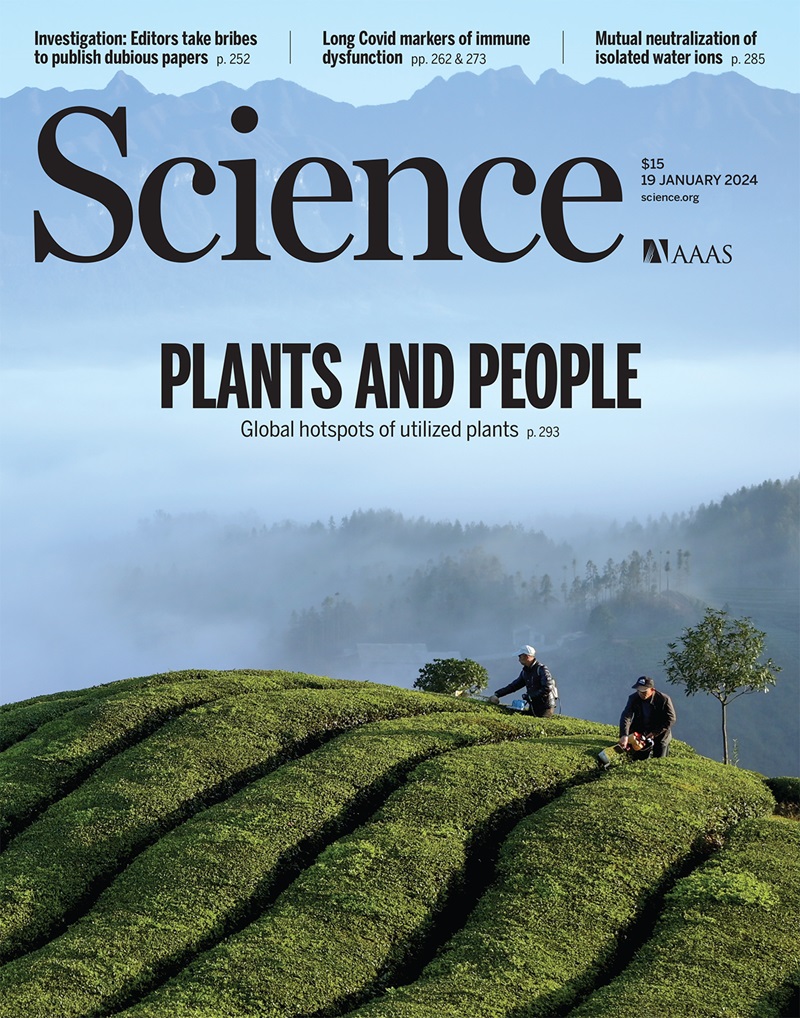通过打开进化上失能的基因开关来重新激活哺乳动物的再生
IF 44.7
1区 综合性期刊
Q1 MULTIDISCIPLINARY SCIENCES
引用次数: 0
摘要
哺乳动物在受损耳廓再生能力方面表现出显著的多样性,但再生失败背后的遗传变化仍然难以捉摸。我们对耳廓损伤后恢复的家兔和小鼠进行了单细胞和空间转录组分析。由于限速酶Aldh1a2的缺乏和RA降解的加速,维甲酸(RA)的产生不足是导致小鼠耳廓再生失败的原因。开启Aldh1a2或补充RA可重新激活再生。多种Aldh1a2相关调控元件的进化失活是小鼠和大鼠损伤后Aldh1a2表达不足的原因。此外,一个增强子激活Aldh1a2足以改善转基因小鼠的耳廓再生。我们的研究发现了一个与再生进化有关的基因开关。本文章由计算机程序翻译,如有差异,请以英文原文为准。

Reactivation of mammalian regeneration by turning on an evolutionarily disabled genetic switch
Mammals display prominent diversity in the ability to regenerate damaged ear pinna, but the genetic changes underlying the failure of regeneration remain elusive. We performed comparative single-cell and spatial transcriptomic analyses of rabbits and mice recovering from pinna damage. Insufficient retinoic acid (RA) production, caused by the deficiency of rate-limiting enzyme Aldh1a2 and boosted RA degradation, was responsible for the failure of mouse pinna regeneration. Switching on Aldh1a2 or RA supplementation reactivated regeneration. Evolutionary inactivation of multiple Aldh1a2-linked regulatory elements accounted for the deficient Aldh1a2 expression upon injury in mice and rats. Furthermore, the activation of Aldh1a2 by a single rabbit enhancer was sufficient to improve ear pinna regeneration in transgenic mice. Our study identified a genetic switch involved in the evolution of regeneration.
求助全文
通过发布文献求助,成功后即可免费获取论文全文。
去求助
来源期刊

Science
综合性期刊-综合性期刊
CiteScore
61.10
自引率
0.90%
发文量
0
审稿时长
2.1 months
期刊介绍:
Science is a leading outlet for scientific news, commentary, and cutting-edge research. Through its print and online incarnations, Science reaches an estimated worldwide readership of more than one million. Science’s authorship is global too, and its articles consistently rank among the world's most cited research.
Science serves as a forum for discussion of important issues related to the advancement of science by publishing material on which a consensus has been reached as well as including the presentation of minority or conflicting points of view. Accordingly, all articles published in Science—including editorials, news and comment, and book reviews—are signed and reflect the individual views of the authors and not official points of view adopted by AAAS or the institutions with which the authors are affiliated.
Science seeks to publish those papers that are most influential in their fields or across fields and that will significantly advance scientific understanding. Selected papers should present novel and broadly important data, syntheses, or concepts. They should merit recognition by the wider scientific community and general public provided by publication in Science, beyond that provided by specialty journals. Science welcomes submissions from all fields of science and from any source. The editors are committed to the prompt evaluation and publication of submitted papers while upholding high standards that support reproducibility of published research. Science is published weekly; selected papers are published online ahead of print.
 求助内容:
求助内容: 应助结果提醒方式:
应助结果提醒方式:


